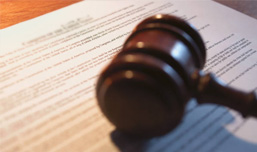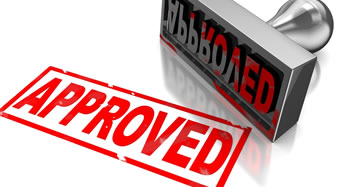Medical devices: liability of notified bodies?
May 2015
On 9 April 2015, the German Federal Court of Justice (FCJ) referred three questions to the Court of Justice of the European Union (CJEU) on the interpretation of the Medical Devices Directive. The FCJ seeks clarity as to the liability of notified bodies for medical devices, asking whether the obligations imposed on a notified body have a protective effect on patients and how far a notified body's duties of product surveillance can reach.
Background
The questions evolved in a pending FCJ case concerning the liability of a notified body – TÜV Rheinland. The plaintiff was implanted with silicone breast implants in Germany in December 2008; the implants came from a French company that later went insolvent. In 2010, the French authorities determined that the manufacturer had used inferior industrial silicone for the breast implants that failed to comply with the quality standards. Following medical advice, the plaintiff had her implants removed in 2012. She claims EUR 40,000 in damages for pain and suffering from the notified body and a judgment declaring the notified body liable for future material damage.
Silicone breast implants are medical devices that may only be marketed after successfully undergoing a conformity assessment as per § 6(2) s. 1, § 37(1) MPG (Medizinproduktegesetz, German Medical Devices Act), § 7(1) No. 1 MPV (Medizinprodukte-Verordnung, German Medical Devices Regulation) in conjunction with Annex II of the Directive 93/42/EEC concerning medical devices. The conformity evaluation includes an assessment (audit) of the manufacturer's quality assurance system, an examination of the product design, and product surveillance. These tasks are performed by a notified body instructed by the manufacturer.
The France-based implant manufacturer instructed the defendant as notified body to discharge the said obligations. The plaintiff believes that the defendant did not properly comply with its obligations as a notified body. She argued that if the defendant had adequately reviewed the business records and tested the products, the defendant could have discovered the use of industrial silicone and prevented further marketing of the silicone breast implants.
 The lower courts dismissed the action, holding that the defendant's certification process, which involves an evaluation of the quality assurance system, is not intended to protect potential patients. They also found that the defendant's practice of carrying out announced audits for surveillance purposes was sufficient. The plaintiff filed an appeal on questions of law to the FCJ to further pursue her case. The FCJ decided to refer three questions to the CJEU, seeking clarity on the interpretation of the Council Directive 93/42/EEC of 14 June 1993 concerning medical devices:
The lower courts dismissed the action, holding that the defendant's certification process, which involves an evaluation of the quality assurance system, is not intended to protect potential patients. They also found that the defendant's practice of carrying out announced audits for surveillance purposes was sufficient. The plaintiff filed an appeal on questions of law to the FCJ to further pursue her case. The FCJ decided to refer three questions to the CJEU, seeking clarity on the interpretation of the Council Directive 93/42/EEC of 14 June 1993 concerning medical devices:
- Is it the objective and intention of the Directive that, for class III medical devices, the notified bodies instructed to audit the quality assurance system, examine the product design and carry out product surveillance, are acting with the purpose of protecting all potential patients so that they may be directly and fully liable towards patients when they negligently fail to comply with their obligations?
- Does Annex II of the Directive 93/42/EEC, for class III medical devices, impose on the notified body instructed to audit the quality assurance system, examine the product design and carry out product surveillance, a general or at least a for-cause obligation to test the product?
- Does Annex II of the Directive 93/42/EEC, for class III medical devices, impose on the notified body instructed to audit the quality assurance system, examine the product design and carry out product surveillance, a general or at least a for-cause obligation to view business records of the manufacturer and/or to carry out unannounced audits?
German case law
Notified bodies are not manufacturers of medical devices, nor do they maintain direct contractual relationships with patients or users of the medical devices. This leaves no room to hold a notified body liable under the Product Liability Act or a contract between the notified body and the patient/user of the medical device. A breach of a contract protecting others or a tort could constitute grounds for liability. As far as we can see, however, this has been unanimously refused by the courts in the past. We will discuss the reasons below (see OLG Zweibrücken, judgment of 30 January 2014, case no. 4 U 66/13).
Breach of a contract protecting others
Patients who have come to harm may be entitled to damages from notified bodies by virtue of contractual principles: if the certification contract between the manufacturer and the notified body is confirmed to have a protective effect on the patient, the notified body could be held liable for breaching a contract protecting others.
The protective effects of a contract can only be extended to others under the following conditions:
- The intent and purpose of the contract and the obvious effects of the contractual obligations on the third party require the third party to be included for reasons of good faith; and
- A contracting party can reasonably, and visibly to the other contracting party, expect that the care and protection owed to it will be equally afforded to the third party.
 As regards the latter obligation, a third party will only be included in the duties of protection and care arising from a contract (1) if he is intended by the contract to come into contact with the primary contractual obligations, (2) if the party to whom the obligation is owed ("obligee") has a legitimate interest in involving the third party, (3) if the interests of the party owing the obligation ("obligor") are safeguarded in that the extended liability is obvious and reasonable, and (4) if the third party is vulnerable and requires protection. Provided that these criteria are met, the protection given by the contract encompasses not only persons whose life and welfare has been entrusted to the party owing a duty of protection, but can also, explicitly or implicitly, include persons where this is not the case. In particular, this concerns professional groups who possess evident, state-recognised expertise and whose contractual obligations clearly are intended to be used in relation to third parties and, by the intent of the principal, have evidentiary value (for example in the case of an expert witness). Experts who act in that capacity without being state-recognised can be held liable by these principles as well, if the instruction to prepare the expert opinion, by the intent of the contracting parties, encompasses the protection of a third party.
As regards the latter obligation, a third party will only be included in the duties of protection and care arising from a contract (1) if he is intended by the contract to come into contact with the primary contractual obligations, (2) if the party to whom the obligation is owed ("obligee") has a legitimate interest in involving the third party, (3) if the interests of the party owing the obligation ("obligor") are safeguarded in that the extended liability is obvious and reasonable, and (4) if the third party is vulnerable and requires protection. Provided that these criteria are met, the protection given by the contract encompasses not only persons whose life and welfare has been entrusted to the party owing a duty of protection, but can also, explicitly or implicitly, include persons where this is not the case. In particular, this concerns professional groups who possess evident, state-recognised expertise and whose contractual obligations clearly are intended to be used in relation to third parties and, by the intent of the principal, have evidentiary value (for example in the case of an expert witness). Experts who act in that capacity without being state-recognised can be held liable by these principles as well, if the instruction to prepare the expert opinion, by the intent of the contracting parties, encompasses the protection of a third party.
According to current case law, the objective and intention of the product certification carried out by a notified body, especially if it amounts to an evaluation of the quality assurance system, is not to protect third parties. The courts have held that a notified body's certification activities serve to allow the medical devices manufacturer to prove to the authorities the conformity and marketability of its medical devices in the internal market. The conformity assessment lays the foundation for a medical device to be placed on the market. The documentation of the assessment is one building block of the process and usually works as evidence to show to the national authorities that the standards of care have been observed by the responsible parties without, however, relieving those parties of their responsibility. The certificates are a central element of the required documentation of the responsible manufacturer. It is not the purpose of the CE mark, attached to a medical device after passing the conformity assessment, to provide the buyers or consumers (patients) with rights to claim damages from the notified body.
Another argument that has been used by the courts against involving patients in the protective effects of a certification contract is that the group of persons covered by the contractual duties of protection must not be overly large – which would be the case if a notified body were to be held liable. The circle of persons benefiting from the protective effects is limited to those third parties in whose interest the obligor shall, at least also, fulfil the obligation, as agreed explicitly or tacitly by the contracting parties. Basically, the group of protected third parties should be limited to keep the obligor's risk calculable and, finally, insurable. The obligor has to be able to assess and, if necessary, insure its risk when signing the contract. The obligor should not be held liable for damage sustained by others if it cannot be reasonably expected, in accordance with good faith principles and the purpose of the contract, to accept the risk of extended liability without any additional compensation.
Finally, the courts found that the medical devices manufacturer has no legitimate interest in establishing contractual duties of protection that (also) benefit the patients; the manufacturer has no special legal relationship with the patients or consumers and is only required by general rules of tort and product liability not to violate their legally protected interests through the medical device.
Liability in tort
Likewise, the courts have in the past denied any tortuous liability of the notified bodies. Liability in tort would require that the notified body had breached a duty imposed on it by law, for example by not adequately reviewing the manufacturer's quality management system in a certification or audit procedure. However, there is no general legal obligation to protect others against harm. To be held liable for an omission, the notified body would have to be subject to a special legal obligation to act, by virtue of which it accepts legal responsibility for the harmful result which should not have occurred. There has to be a special legal reason by which a person, by way of exception, can be held responsible for refraining from taking positive action to protect the legal interests of another. The party held liable in tort must have accepted responsibility to intervene in order to prevent the effect. A duty to act in the patients' interest may arise from the certification contract, but only if, by the intent and purpose of the contract and according to the principles of good faith, there is a contractual duty of care towards the patients and their welfare is a personal concern of the medical device manufacturer. This can arise if the latter is obliged to protect and extend care to patients and, therefore, has an interest in the persons entrusted to its protection not coming to any harm. However, this interpretation has been denied by the courts in the past.
 Such a duty to act in order to protect others, owed by a notified body to a patient, could be grounded in law, particularly the Medical Devices Act in conjunction with the directives on medical devices. The courts have denied such an obligation under Sec. 6 MPG in conjunction with the Directive 93/42/EEC, in spite of the following aspects: (1) Both the Directive 93/42/EEC and the Medical Devices Act define that it is their objective to protect the patients who come into contact with the medical devices; (2) the Directive 93/42/EEC requires expressly in its considerations that medical devices should provide patients, users and third parties with a high level of protection and attain the performance levels attributed to them by the manufacturer; and (3) the protection of patients is a declared goal of the Medical Devices Act (§ 1 MPG). In the view of the courts, this does not create any statutory obligation on the notified body to intervene, owed to all patients/customers who come into contact with the medical device. The courts reasoned that the product certification merely serves to create one of the prerequisites for placing medical devices on the internal market and that the notified bodies are not required to themselves inspect the products, but only to carry out a review based on the manufacturer's documents and assurances and to monitor the manufacturer as required by law.
Such a duty to act in order to protect others, owed by a notified body to a patient, could be grounded in law, particularly the Medical Devices Act in conjunction with the directives on medical devices. The courts have denied such an obligation under Sec. 6 MPG in conjunction with the Directive 93/42/EEC, in spite of the following aspects: (1) Both the Directive 93/42/EEC and the Medical Devices Act define that it is their objective to protect the patients who come into contact with the medical devices; (2) the Directive 93/42/EEC requires expressly in its considerations that medical devices should provide patients, users and third parties with a high level of protection and attain the performance levels attributed to them by the manufacturer; and (3) the protection of patients is a declared goal of the Medical Devices Act (§ 1 MPG). In the view of the courts, this does not create any statutory obligation on the notified body to intervene, owed to all patients/customers who come into contact with the medical device. The courts reasoned that the product certification merely serves to create one of the prerequisites for placing medical devices on the internal market and that the notified bodies are not required to themselves inspect the products, but only to carry out a review based on the manufacturer's documents and assurances and to monitor the manufacturer as required by law.
Moreover, the notified body must have acted culpably to be held liable in tort. The notified body must have committed a demonstrable mistake in carrying out the conformity assessment, for example in that the notified body did not adequately comply with its monitoring duties and was, or ought to have been, aware of this fact.
Assessment and outlook
The Federal Court of Justice apparently does not share the above view, which rejects the liability of notified bodies. The first of the three questions addresses the potential duty of a notified body to act in order to protect prospective patients which, if confirmed, can result in a direct, unlimited liability of the notified body in contract and in tort, if the notified body negligently failed to comply with its duties. The second and third questions referred to the CJEU relate to the specific obligations of the notified body, seeking certainty as to when the notified body has committed a negligent omission. Depending on the CJEU's answers to the questions referred to it for a preliminary ruling, the FCJ may confirm the nature of the liability of the notified body or how the protective obligations for the benefit of third parties to the contract are shared between the notified body and the manufacturer. This could have a significant impact on notified bodies in terms of liability.
Given the stricter standards introduced by the Commission Implementing Regulation (EU) No. 920/2013 for the work of notified bodies, it also seems doubtful whether the German courts would maintain their arguments above now. The Implementing Regulation (EU) No. 920/2013 on the designation and the supervision of notified bodies, as well as the Commission Recommendation of 24 September 2013 on the audits and assessments performed by notified bodies in the field of medical devices, and the provisions of the Proposal for a Regulation on medical devices (COM(2012) 542 final) and on in vitro diagnostic medical devices (COM(2012) 541 final) have already tightened the standards relating to the obligations of notified bodies. They make it clear that the proper functioning of notified bodies is crucial for ensuring a high level of health and safety protection, the free movement of medical devices within the internal market, and citizens' confidence in the system.  As a result, the need to have the notified bodies controlled and monitored by the designating authorities has increased. These provisions have already led to stricter requirements on the notified bodies, and their overall tendency involves a substantial risk of the national courts now confirming that the notified bodies have a duty to intervene in order to protect patients.
As a result, the need to have the notified bodies controlled and monitored by the designating authorities has increased. These provisions have already led to stricter requirements on the notified bodies, and their overall tendency involves a substantial risk of the national courts now confirming that the notified bodies have a duty to intervene in order to protect patients.
Also noteworthy is the CJEU judgment of 5 March 2015 in C-503/13, by which the CJEU facilitated the proof of a product defect in medical devices by the aggrieved party. The judgment tightens the liability principles by stating that a manufacturer must also accept liability if the defect has not been confirmed for a particular product but the product is part of a group or series of products for which a potential defect has been determined. In addition, the CJEU held that the damage caused by a surgical operation to replace such a defective product constitutes "damage caused by death or personal injuries". For the time being, the CJEU ruling only concerns the liability of manufacturers. Looking at the liability risks described above, the decision of the CJEU can become relevant for notified bodies as well. The notified body now has to become active if there is sufficient evidence for a potential defect in a group or series of products.
If you have any questions on this article or would like to propose a subject to be addressed by Synapse please contact us.


Wolfgang
Rehmann
Wolfgang is a partner in the Pharmaceutical & Patents group based in our Munich office.

"According to current case law, the objective and intention of the product certification carried out by a notified body is not to protect third parties."
"Depending on the CJEU’s answers, the FCJ may confirm how the protective obligations for the benefit of third parties are shared between the notified body and the manufacturer."

